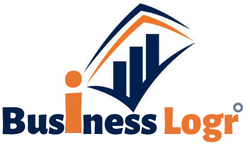
Automation is like the fabled king Midas, whose touch could turn everything into gold. All the industries that have embraced automation, changed beyond recognition. In the retail industry, the changes are visible.
Automation is bringing new trends to the retail industry and impacting retail touch points and retail tech. Consumers are benefiting from it and so can small businesses.
The Growth Story
The key factors driving the growth of retail automation are the:
- Need to reduce cost;
- Demand from customers to improve the quality; and
- Appreciation for automation in retail.
Now let’s see the major trends and the actionable takeaways a small business owner can derive from them:
Customer Experience
Customers who find the buying experience mundane are unlikely to stick. Automation can improve customer experience. Westfield London, the shopping giant pulled it off beautifully. Their RFID technology driven smart card system allowed customers to park their cars without needing a ticket.
The Order & Pay App by Starbucks is yet another example of automation done right. Using the app, a customer can pre-order items and collect them from his nearest outlet, not having to stand in a line.
The customer scoring system is a great example of how brands can work on customer experience. The scoring system spots unhappy customers, so that brands can interact with them and polish up their image.
A small business has important lessons to learn from these examples. The lessons are:
First, a business needs to use automation to connect to customers to get an idea of the customer’s perception towards its brand image.
And secondly, a business doesn’t have to automate every single aspect of its workflow. It needs to find ideas to improve customer experience and automate their execution, that’s all.
How can automation leverage these lessons? That brings us to our next point, which is:
Automation of Engagement
Consumer engagement, thought to be a creative process, can be automated. It’s a sectional process, achieved by:
#Justifying shopping: This type of automation seeks to eliminate impulse buys and make shopping entirely context-driven. Contextual product recommendation is now passe. The latest approach is rationalizing shopping to customers. A convenience brand called 7-Eleven offers customers promotions based on location and weather. This approach heavily depends on automation.
#Use surveys: Customer surveys not only fetch actionable insights, but also function as a medium to engage with customers. Nevertheless, you need automation for that.
Most automated survey platforms have:
- Customized survey templates
- Proprietary metrics for measuring satisfaction
State-of-the-art tools survey customers to discover a pattern in their satisfaction levels and parameterize it. Automated consumer surveys, depending on the efficiency of the tool being used, can lead customers to CTA buttons.
#Email drip campaign: Email is a great way to engage with customers. A drip campaign automates email marketing. From suggesting the email headline to tracking email open and response rates, a drip campaign handles everything. Automation in email marketing personalizes the email content.
The auto-responding feature can reply to customer queries and requests. A simple “Welcome” or “Thank You” can turn customers on. Email automation sends birthday wishes to customers, informs them about special offers and discounts and most importantly, uses demographic insights such as a customer’s age, nationality, etc. for a personalized connection.
Customer engagement automation is not discriminatory; it benefits both large businesses and small businesses. While large businesses eye better sales, small players in the retail industry aim at building reputation.
Responsive PoS
PoS is the most important among all aspects of retail. The reasons are:
- The 2013 estimation of Point of Sale (PoS) retail was more than 92 percent of total retail dollar volume in the United States.
- The EMV Liability Shifts put the onus of an electronic fraud on the merchants instead of customers.
Simply put, transparency and convenience are pushing retailers to upgrade their PoS systems. Mobile PoS apps guarantee both. Small businesses can leverage such apps, largely because optimizing the retail experience for them is cost-effective.
Responsive PoS systems are even better. mCommerce is growing but many consumers still shop using their desktop devices. Responsive PoS includes those consumers. Most cutting edge PoS systems are responsive. They also come with unique features.
Take Shopify for example. It’s more than just an eCommerce CMS. Its templating language is unique. So is the network of other Shopify designers. Vend offers you a consolidated platform, from which you can manage your inventory and customer profile. BigCommerce is tailor-made to meet the needs of small and medium-sized businesses. It offers a plethora of features and mobility solutions at a pocket-friendly price.
Hence, responsive PoS systems are a must for small businesses.
UGC Automation
Brands now let customers do the talking. User-generated content (UGC) builds trust, creates brand loyalty and is sort of free advertising. Automation makes UGC more effective.
Let’s reference Yotpo’s survey into mCommerce that showed how automated UGC benefits retail brands that sell fashion and accessory products. The productivity of the feedback loop increases when the UGC is automated. That’s because automated UGC comes from targeted consumer segments after measuring the satisfaction level of customers, and it always brings actionable insights. It works like a charm for conversion rate.
[“source-smallbiztrends”]




